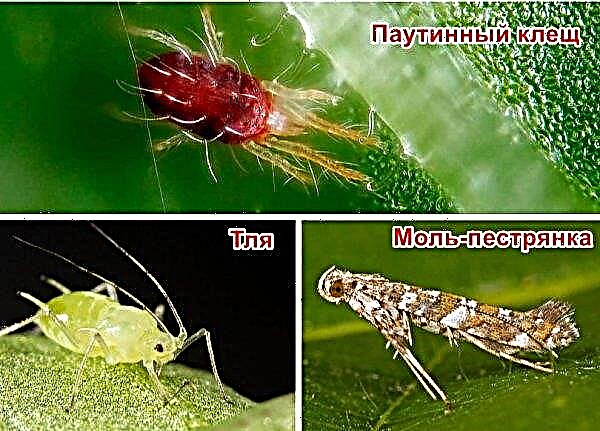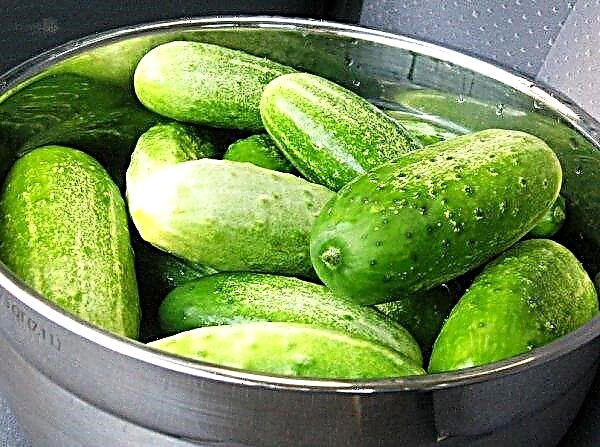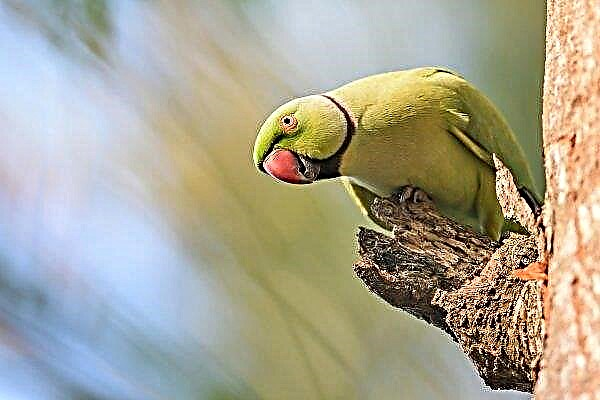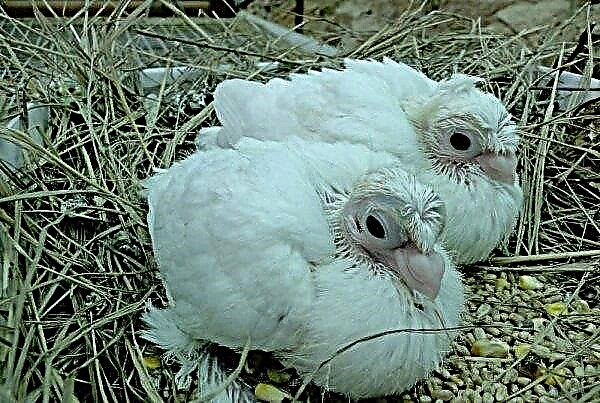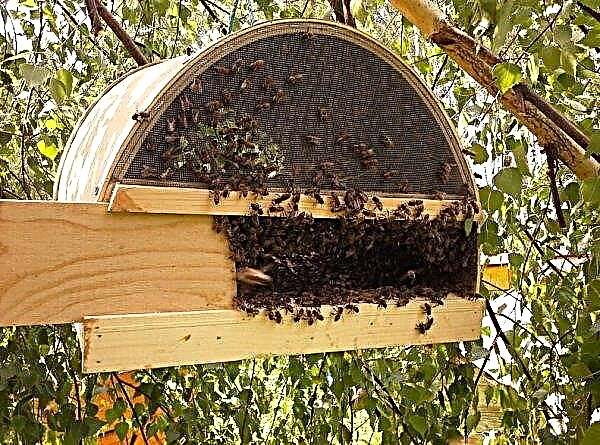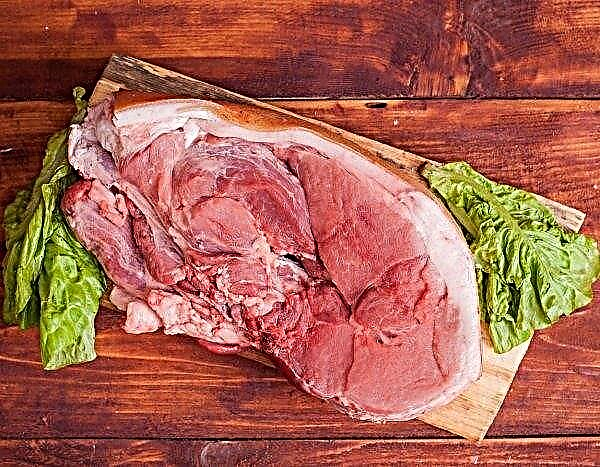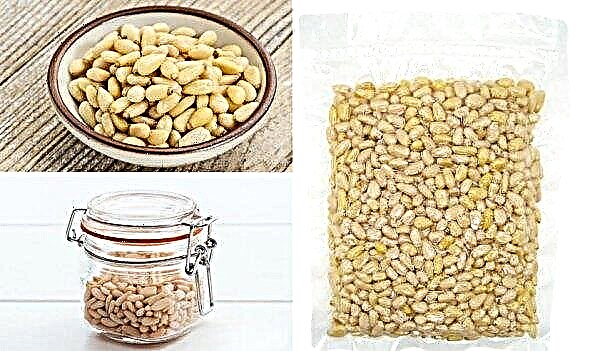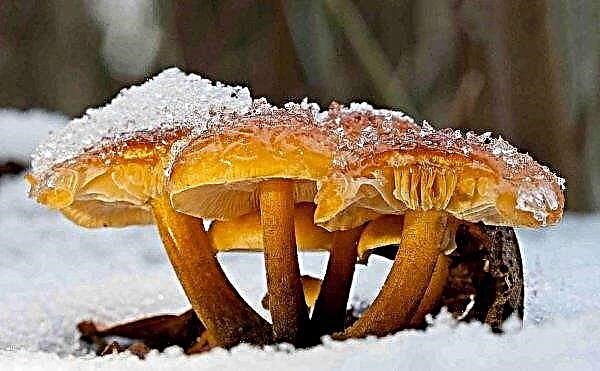Owners of homestead farms and mini-farms are well suited for raising quails, as rather unpretentious small birds. However, first of all, you need to decide for what purpose you will contain these representatives of the chicken group. To obtain high-quality meat products, you need to choose precocious broilers. However, among them there are quite good laying hens. In our article, we will talk about one of these crosses - the Texas quail.
History of breeding Texas quail
This breed, also known as the White Pharaoh, was bred in the second half of the 20th century at the Diamond H Ranch cattle breeding enterprise, when the local diversification specialist, Doctor of Texas University A & amp; M Lee Cartwright came up with the idea of crossing an old highly productive Japanese breed and English quail - carriers of the recessive gene wh.
The result is a giant quail, famous for its productive qualities and excellent presentation.
Description and characteristics of the breed
The Texas quail is a hardy bird, slightly susceptible to infections, with a calm (even too much, according to farmers) character. Experienced poultry farmers note some lethargy among Texans, which, although it contributes to weight gain, also negatively affects the fertility of eggs.
Did you know? The first living creatures born in space were the quail, hatched at the station «PEACE» March 22, 1990.
Appearance
Under the lush snow-white (with a small number of black dots) plumage of these birds hides a cream-colored skin. Their neck is short and their heads are small. Due to the fact that this breed belongs to meat, quail have a dense, strong physique, a broad back and powerful legs.
Weight and dimensions
Females reach a weight of 400-450 g, males are slightly less - up to 360 g.
The table below shows the average weight by week:
| Age (weeks) | The weight of males in grams | The weight of females in grams |
| 1 | 37 | 37 |
| 2 | 95 | 95 |
| 3 | 148 | 150 |
| 4 | 251 | 247 |
| 5 | 304 | 325 |
| 6 | 340 | 365 |
| 7 | 360 | 400 |
Productive qualities
Regardless of gender, about a third of the live weight of quail is its feathers. Accordingly, the meat yield in the plucked carcass ranges from 240 g in males to 280 g in females.
As for egg production, it must be said that when the quail begins to lay eggs at the age of two months, then they are laid, although less frequently, but much larger than other breeds (13–18 g).
Knowledgeable farmers argue that with proper care and feeding, egg production of 220–260 eggs per year can be achieved, with a peak productivity occurring in 5–6 months of age.
Differences between male and female
In addition to the fast pace of mass gain, the quail has smaller, light pink beaks. To more reliably determine the gender, the secretory method is used. To do this, the bird is turned upside down, spreading the feathers of the cloaca.
The smooth surface of the skin without swelling produces quail. If there is a tubercle, with pressure on which a foamy light liquid (sexual secret) is released, then this is a male. The secretory method is used only in slightly older birds, after 3 weeks. Before that, it makes no sense.
Advantages and disadvantages
These quails are considered a very promising breed.
- The following qualities bring her special popularity among poultry farmers:
- fast growth;
- unpretentiousness, good immunity;
- a higher percentage of meat yield than other breeds;
- tasty, dietary white meat (in other breeds, the meat may be bluish, with darker areas, harder);
- large egg products;
- Attractive presentation.
- At the same time, in breeding this cross there are some nuances that must be taken into account:
- newborn chicks are very weak and require special attention and care;
- quails do not hatch eggs; an incubator is required;
- phlegmatic nature and, as a result, low fertility of eggs;
- difficulties in determining the sex (compared to colored rocks, in which the sex is determined by the color of the feathers).

Features of keeping at home
In preparation for the cultivation of this breed, one should take into account their somewhat large sizes, temperament and gastrointestinal tract features. Let us consider in more detail the specifics of the content of Texas quail.
Microclimate
Chicks hatch very weak, and the survival rate even with proper care is about 85%. That is why it is very important to first leave them in the incubator for several hours to dry, and then place them in a brooder with a temperature of +36 ° C.
As they grow older, the temperature is gradually reduced, by day 10 the thermometer should show at least +32 ° C, and by two weeks the temperature gradually drops to +25 ° C. If the chicks are cold, they gather in flocks, which can lead to injury. For adults, the house is maintained at a temperature of about +18 ° C.
Humidity should not be less than 55–65%. The main point is dim light (bright light causes stress in quail). In newborn brooders, illumination is maintained around the clock, and in adult birds, 17 hours a day.
Arrangement of a place of detention
Due to their larger size, standard quail cages will not work for Texans. For a family of 15 quails and 5 males, they build cages with a size of 1000x40x30 cm. These are the parameters that will allow quails to comfortably exist and breed.
The cell ceiling is recommended to be upholstered with soft polyurethane or a dense cloth to prevent injuries during take-off. 10–20 square meters will be enough for the house. m, depending on the number of birds. The room should not be accessible to rodents, small predators, other domestic animals.
Important! Unlike chickens, quail prefer to be carried anywhere, best of all at the ground level, therefore it is not necessary to equip them with nests. It is optimal to make the floor in the cages latticed and slightly inclined by attaching an egg collector so that the bird does not accidentally crush the eggs.
A canopy enclosed by a net is placed next to the house for outdoor walks. In addition to the cage for the house, you will need such equipment:
In addition to the cage for the house, you will need such equipment:
- grooved (for better access) feeders and drinking bowls (outside the cage);
- hay or shavings are suitable as a litter;
- lighting requires a pair of bulbs of 25 watts;
- waste collection tray;
- exhaust fan (it is important to choose the right one to prevent drafts).
Power Features
Like any meat breed, Texans need to be fed high-calorie, protein-rich foods. One bird consumes an average of 45 g of feed per day.
Young animals
Unlike the same chickens, newborn quails are ready to start eating immediately after hatching.
Finely ground chicken starters are best for feeding them, as well as:
- millet;
- greens (nettle, alfalfa, clover);
- boiled chopped vegetables.
 Quail eaters every 2–4 hours, so food should be constantly available, as well as warm water.
Quail eaters every 2–4 hours, so food should be constantly available, as well as warm water.Important! Despite the popularity of the advice to feed the quail immediately after hatching with yolk and cottage cheese, this recommendation is a misconception. An unformed gastrointestinal tract will not withstand such a load, and the result will be the death of the chicks. Dairy products and eggs are included in the diet after 4 weeks.
Adults
From a month old, birds are transferred to three meals a day.
At this age, in addition to feed and greens, the following are already allowed:
- non-acidic cottage cheese;
- yogurt;
- boiled crushed eggs;
- some minced meat and fish;
- meat and bone meal and mineral dressing (ground cockleshell) as additives.
You can not overfeed quail, this leads to obesity.
Basic breeding rules
After all of the above about the meat and egg productivity of these quails, it is logical to conclude that they are very popular. Unfortunately, buying a really pure breed is very difficult. Many farms breed quail “for themselves”, not monitoring the quality of the livestock, which negatively affects the production.
Instead of a Texan, they can sell his "relative" - English quail - whose dimensions are smaller. It is necessary to choose tribal quail at certified points of sale.
If you, in turn, want to breed Texans, you need to pay special attention to breeding, which will allow you to get the same large, highly productive bird. In addition, you need to know the basic rules:
In addition, you need to know the basic rules:
- Breeding eggs are stored for no longer than a week, then hatchability is reduced.
- Storage temperature to the incubator should be at least +18 ° C.
- The incubation period is 17 days.
- Turning eggs in an incubator is optional.
- The age of quail laying eggs for breeding should not exceed 9 months.
Did you know? In the old days, quail were fighting birds, and still in the countries of Central Asia some breeds are kept for fighting.
Hygiene and Disease Prevention
The content of quail includes the maintenance of cleanliness in the house. A daily cleaning is carried out in the room, and the cells are washed at least once a month using a disinfectant, and then thoroughly dried to prevent fungus.
On the threshold of a quailweed, it is necessary to establish a disinfection barrier (at home it is a low box with sawdust treated with a special solution), into which they enter from the street.
If all hygienic norms and rules of keeping are observed, quail rarely get sick. The body temperature of these birds contributes to this - +42 ° С (and most bacteria die at +40 ° С). If Texans can suffer what, it’s:
If Texans can suffer what, it’s:
- vitamin deficiency;
- cannibalism;
- loss of plumage;
- from injuries.
Oviduct prolapse occurs infrequently in this breed. Anxious quail becomes lethargic (even against the background of normal phlegmatism), weak, poorly eaten. Their feathers are disheveled, their heads are unnaturally thrown back. The first sign of cannibalism is pecking eggs.
To eliminate the arising health problems, it is enough to amend the conditions of detention:
- add vitamins to the diet (fish oil, Chiktonik vitamin solution, baker's yeast);
- reduce the density of birds in cages;
- make sure that there are no drafts in the house, and the humidity is at least 50-60%;
- Remember about dim lighting.
Additional care and maintenance tips
For beginning farmers and those who have not dealt with quail, in particular, Texas quails, useful tips for care will be useful:
- Experts advise when buying to pay attention to the number of black dots in the plumage. It is believed that the less they are, the better the breed.
- Cells are best placed a meter from the floor (for easy cleaning and egg collection).
- Quail is not very fond of being picked up. If you can not do without it, it is better to do it in a shaded room.
- For breeding, it is better to use a vertical type incubator.
- Vitamins are given in repeated short courses: they are drunk for 5 days, then they take a break for 5 days.
- A drop of potassium permanganate is added to the water for the chicks.
 Texas quail is one of the most popular breeds among farmers due to its high productive qualities, calm, undemanding character and excellent egg production for beef cross.
Texas quail is one of the most popular breeds among farmers due to its high productive qualities, calm, undemanding character and excellent egg production for beef cross.For the successful cultivation of Texans, it is enough to feed them three times a day, offering only 15 g of food at a time, and follow certain rules for the care described in this article.


